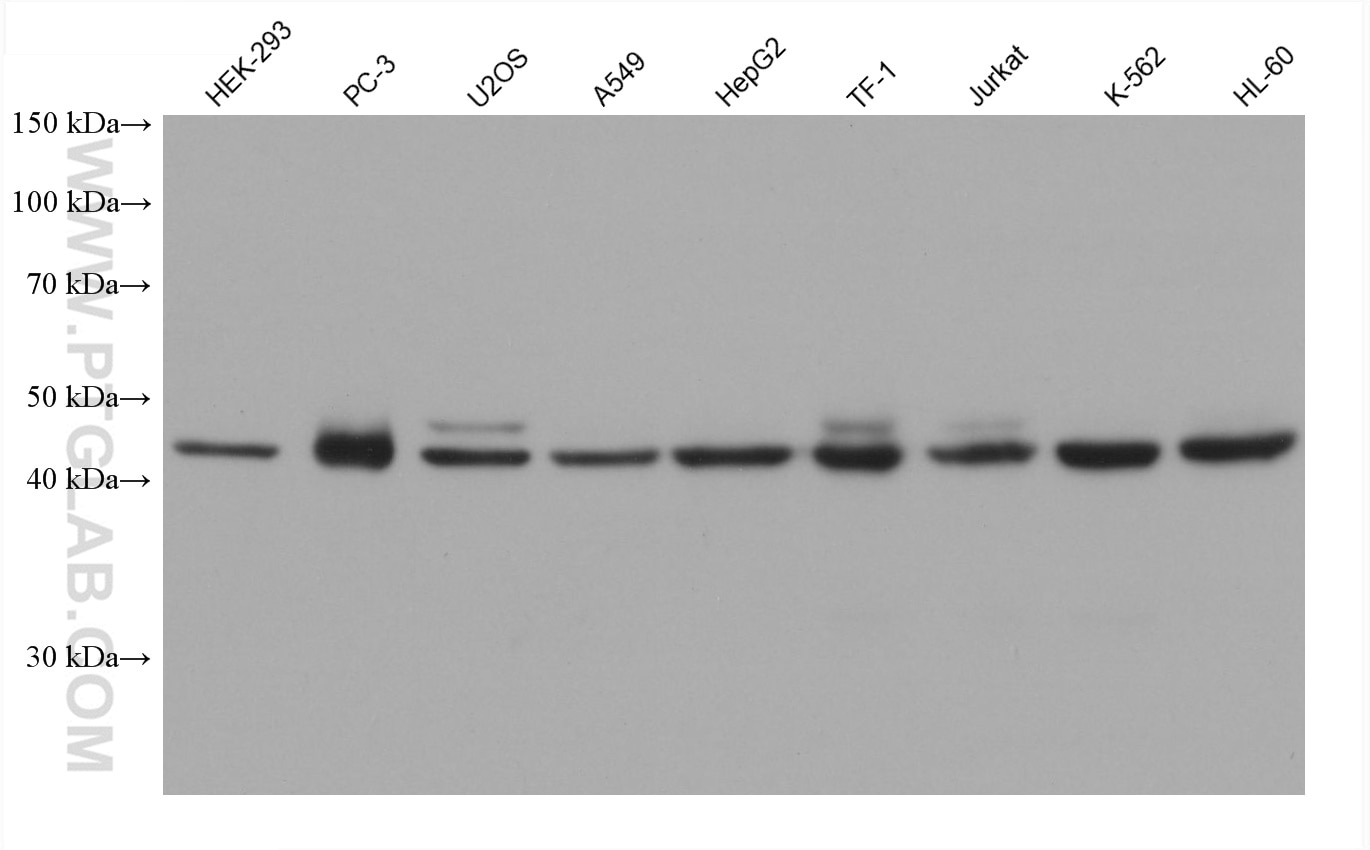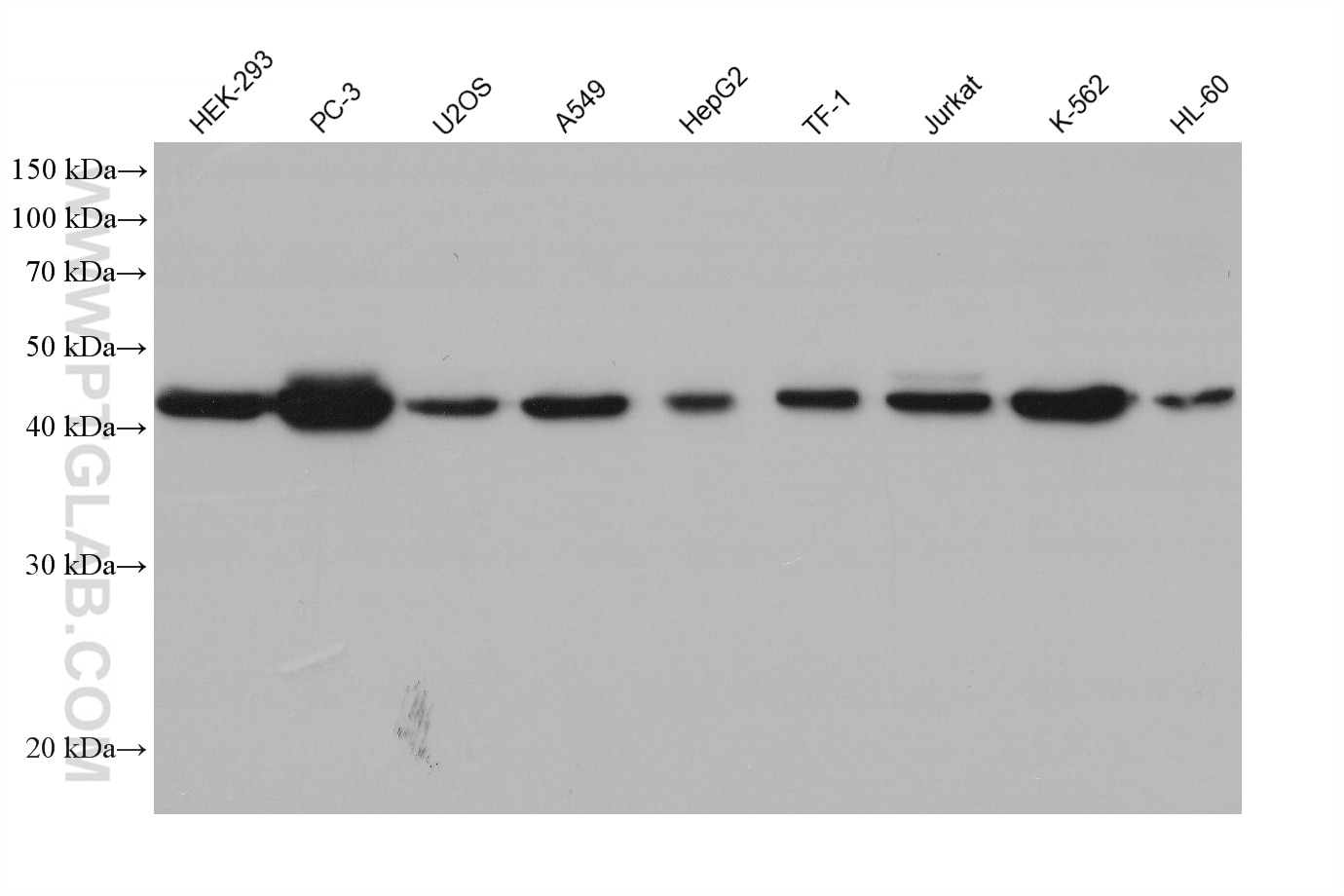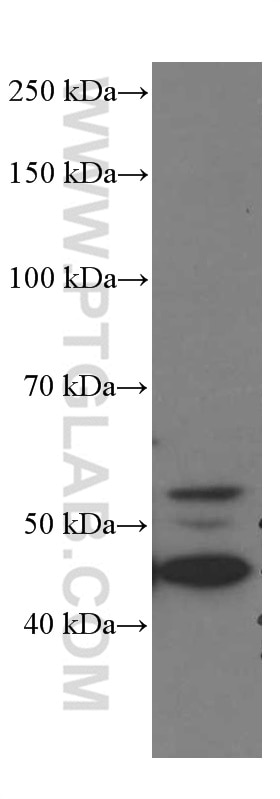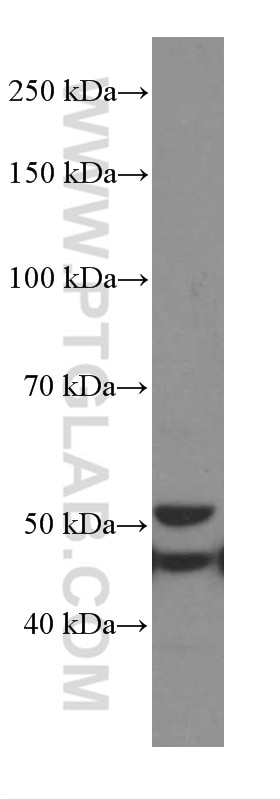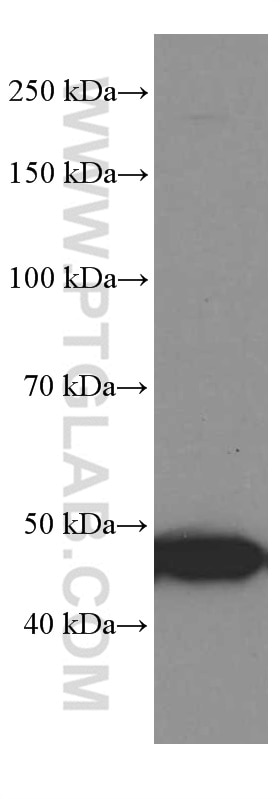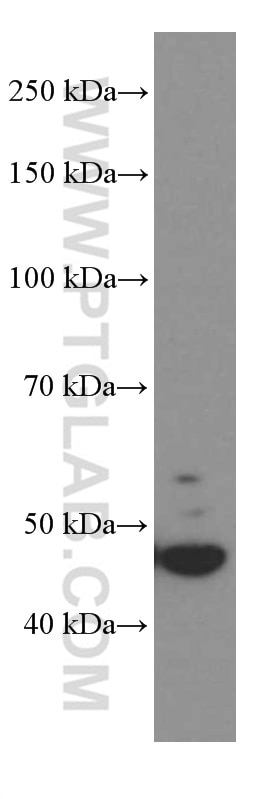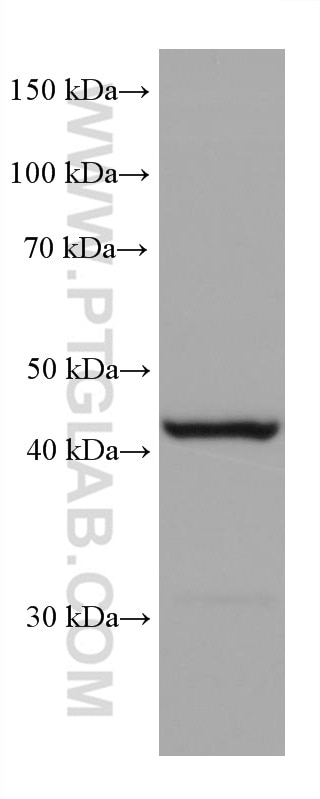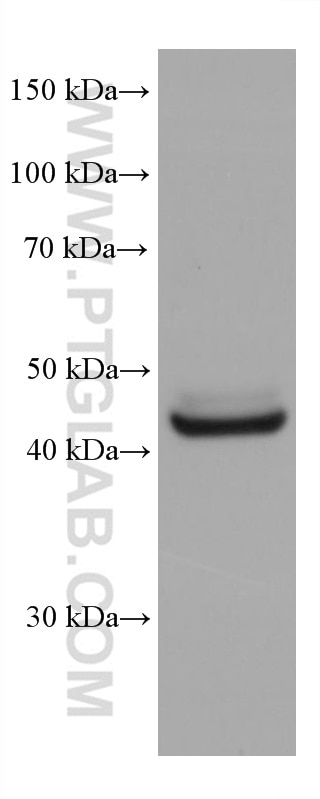Validation Data Gallery
Tested Applications
| Positive WB detected in | HEK-293 cells, A431 cells, COLO 320 cells, EC109 cells, HL-60 cells, human colon tissue, human small intestine tissue, K-562 cells, Raji cells, TF-1 cells, PC-3 cells, U2OS cells, A549 cells, HepG2 cells, Jurkat cells |
| Positive IP detected in | THP-1 cells |
| Positive IF/ICC detected in | HeLa cells |
Recommended dilution
| Application | Dilution |
|---|---|
| Western Blot (WB) | WB : 1:5000-1:50000 |
| Immunoprecipitation (IP) | IP : 0.5-4.0 ug for 1.0-3.0 mg of total protein lysate |
| Immunofluorescence (IF)/ICC | IF/ICC : 1:400-1:1600 |
| It is recommended that this reagent should be titrated in each testing system to obtain optimal results. | |
| Sample-dependent, Check data in validation data gallery. | |
Published Applications
| WB | See 47 publications below |
| IHC | See 4 publications below |
| IF | See 13 publications below |
Product Information
66387-1-Ig targets GSDMD in WB, IHC, IF/ICC, IP, ELISA applications and shows reactivity with human samples.
| Tested Reactivity | human |
| Cited Reactivity | human, mouse, rat |
| Host / Isotype | Mouse / IgG2a |
| Class | Monoclonal |
| Type | Antibody |
| Immunogen |
CatNo: Ag16827 Product name: Recombinant human GSDMD protein Source: e coli.-derived, PET28a Tag: 6*His Domain: 135-484 aa of BC008904 Sequence: HERHLRQPEHKVLQQLRSRGDNVYVVTEVLQTQKEVEVTRTHKREGSGRFSLPGATCLQGEGQGHLSQKKTVTIPSGSTLAFRVAQLVIDSDLDVLLFPDKKQRTFQPPATGHKRSTSEGAWPQLPSGLSMMRCLHNFLTDGVPAEGAFTEDFQGLRAEVETISKELELLDRELCQLLLEGLEGVLRDQLALRALEEALEQGQSLGPVEPLDGPAGAVLECLVLSSGMLVPELAIPVVYLLGALTMLSETQHKLLAEALESQTLLGPLELVGSLLEQSAPWQERSTMSLPPGLLGNSWGEGAPAWVLLDECGLELGEDTPHVCWEPQAQGRMCALYASLALLSGLSQEPH 相同性解析による交差性が予測される生物種 |
| Full Name | gasdermin D |
| Calculated molecular weight | 484 aa, 53 kDa |
| Observed molecular weight | 47-53 kDa |
| GenBank accession number | BC008904 |
| Gene Symbol | GSDMD |
| Gene ID (NCBI) | 79792 |
| RRID | AB_2881763 |
| Conjugate | Unconjugated |
| Form | |
| Form | Liquid |
| Purification Method | Protein A purification |
| UNIPROT ID | P57764 |
| Storage Buffer | PBS with 0.02% sodium azide and 50% glycerol{{ptg:BufferTemp}}7.3 |
| Storage Conditions | Store at -20°C. Stable for one year after shipment. Aliquoting is unnecessary for -20oC storage. |
Background Information
GSDMD is a 53 kDa cytosolic protein and a member of the gasdermin protein family, which features 6 members in humans (GSDMA, -B, -C, -D, -E and -F. GSDMD was identified as the executioner of inflammasome-associated pyroptosis. Caspase-1, -11, or -4 cleave GSDMD after an aspartate residue within a central linker domain (D275 in humans and D276 in mice) to generate a 31-kDa N-terminal GSDMD fragment (GSDMD-NT) and a 22-kDa C-terminal fragment (GSDMD-CT). In addition to the canonical 31/22 kDa cleavage products, a 43 kDa fragment has been observed under specific experimental or pathological conditions. The generation of the 43 kDa fragment was observed upon caspase-3 and -7 activation during apoptosis. This antibody can only detect full-length GSDMD.
Protocols
| Product Specific Protocols | |
|---|---|
| IF protocol for GSDMD antibody 66387-1-Ig | Download protocol |
| IP protocol for GSDMD antibody 66387-1-Ig | Download protocol |
| WB protocol for GSDMD antibody 66387-1-Ig | Download protocol |
| Standard Protocols | |
|---|---|
| Click here to view our Standard Protocols |
Publications
| Species | Application | Title |
|---|---|---|
Mol Cancer Metal-enriched HSP90 nanoinhibitor overcomes heat resistance in hyperthermic intraperitoneal chemotherapy used for peritoneal metastases | ||
PLoS Pathog An NLRP3 inflammasome-triggered cytokine storm contributes to Streptococcal toxic shock-like syndrome (STSLS). | ||
iScience ASC/inflammasome-independent pyroptosis in ovarian cancer cells through translational augmentation of caspase-1 | ||
Biochem Pharmacol Deficiency of purinergic P2X4 receptor alleviates experimental autoimmune hepatitis in mice | ||
Emerg Microbes Infect Acquiring high expression of suilysin enable non-epidemic Streptococccus suis to cause Streptococcal toxic shock-like syndrome (STSLS) through NLRP3 inflammasome hyperactivation. | ||
Mol Med MALAT1 knockdown alleviates the pyroptosis of microglias in diabetic cerebral ischemia via regulating STAT1 mediated NLRP3 transcription |

